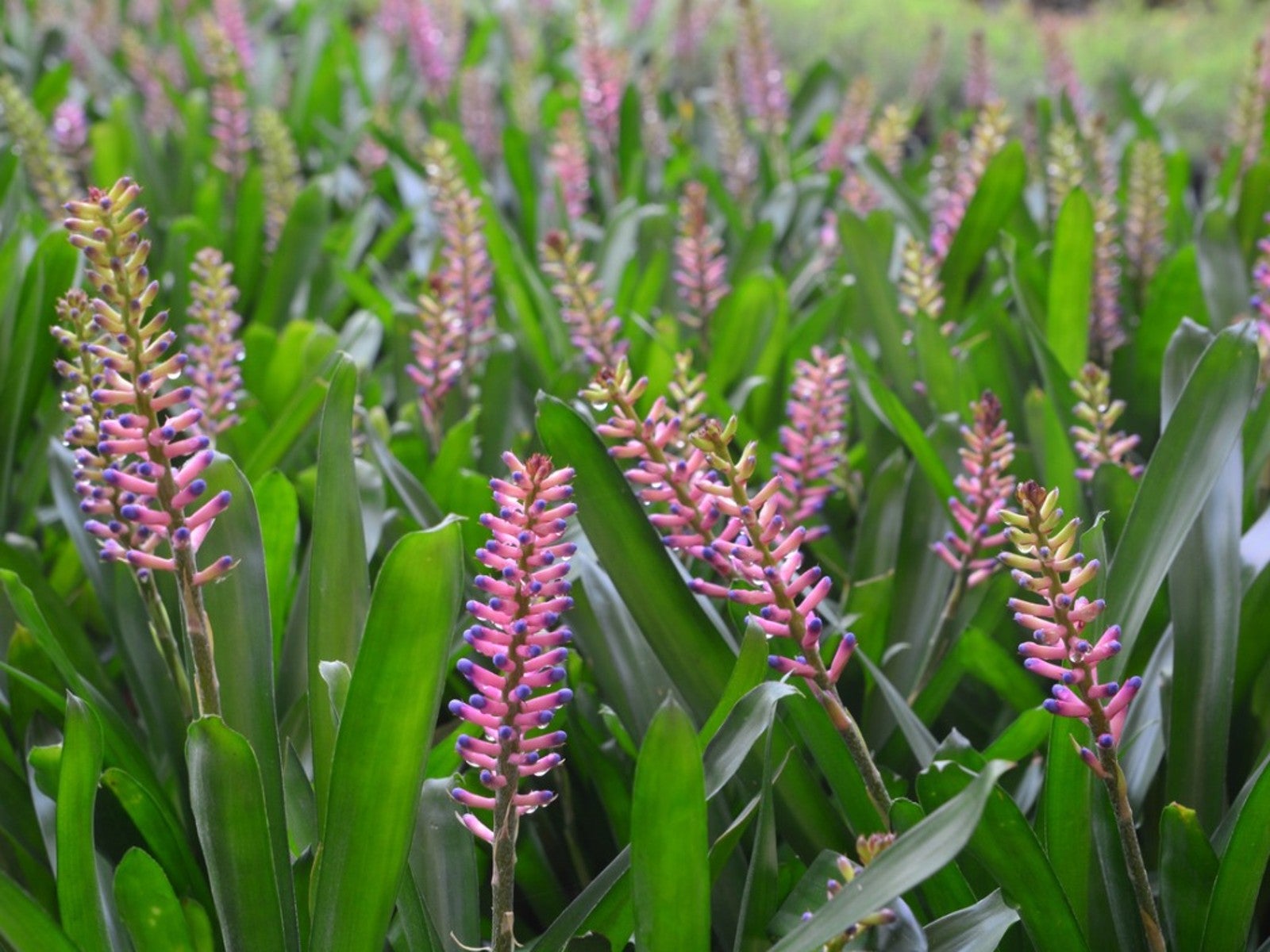Bromeliad Cold Hardiness And Best Varieties For Cold


Flowering bromeliads are striking, with showy, exotic bloom spikes that appear after they are 12 months of age. Many are tropical plants with distinct sensitivity to the cold, making them appropriate to grow as houseplants.
Neoregelia bromeliads are among the largest category of those that are sensitive to the cold. Size of the grouping may change as hybrids are developed and added. In fact, current categorization research says that hybrids encompass the majority of those available for use.
Not all of them balk at cold temperatures, however, with some bromeliads having cold tolerance as low as 20 degrees F (-6.66 C). If you’re interested in moving your bromeliads outside to grow in the landscape, consider the plants discussed below.
Some Cold Tolerant Bromeliads
A number of cold-hardy bromeliads are found in the genus Puya. Some are in the genus Dyckia, like the well-known Matchstick and another called Queen’s Tears of the genus Aqua.
Normally those with thicker leaves are found to be more cold hardy. Other bromeliads possessing cold hardiness include Red Devil, Nickel Silver, Pale Rider and Dyckia Red.
Information about these plants is limited, often not professionally documented, and sometimes just a guess of what is determined by the growing situation in which they’re found. The warmer temperatures of southern Florida seem to be the unofficial home of many of the plants.
Available data also indicates that interest in growing this plant has increased and spread northward. The areas along warmer parts of the Atlantic coast as far north as the Carolinas are in need of how-to-grow information, like when to begin bromeliad winter care by moving them indoors.
Sign up for the Gardening Know How newsletter today and receive a free copy of our e-book "How to Grow Delicious Tomatoes".
Growing Bromeliads Outdoors
When planting bromeliads in the landscape, identify if the plant is cold hardy or sensitive to the cold. If the nighttime winter temperatures in your area don’t normally fall below 20 degrees, leave the plants in the ground permanently and cover them if temperatures are forecast to drop lower.
Get to know the microclimates in your landscape. Microclimates exist in all yards to some degree as little pockets where temperatures vary. These may allow a few extra degrees of warmth, which can be crucial to a plant's growing temperature. However, those temperatures might be lower, so double check with a thermometer a couple of times before attempting to use this to your advantage.
Experts say that temperatures are always warmer on the higher spots of a slope. Wind chill affects plants as it does people, so offer your plants protection from cold northerly winds. Of course, frost as well as freeze will kill bromeliads. A tree canopy above can offer some protection, as will a roof or other protection. While these can all offer forms of protection, you should continue to cover your plants when frost or freeze is forecast.
Freeze Tolerant Bromeliads
A definite need for comprehensive and accurate data about bromeliads is evident. In general, cold hardiness for bromeliads should be defined by USDA Hardiness Zones but, until this happens, the guessing game of growing them will continue.

Becca Badgett was a regular contributor to Gardening Know How for ten years. Co-author of the book How to Grow an EMERGENCY Garden, Becca specializes in succulent and cactus gardening.